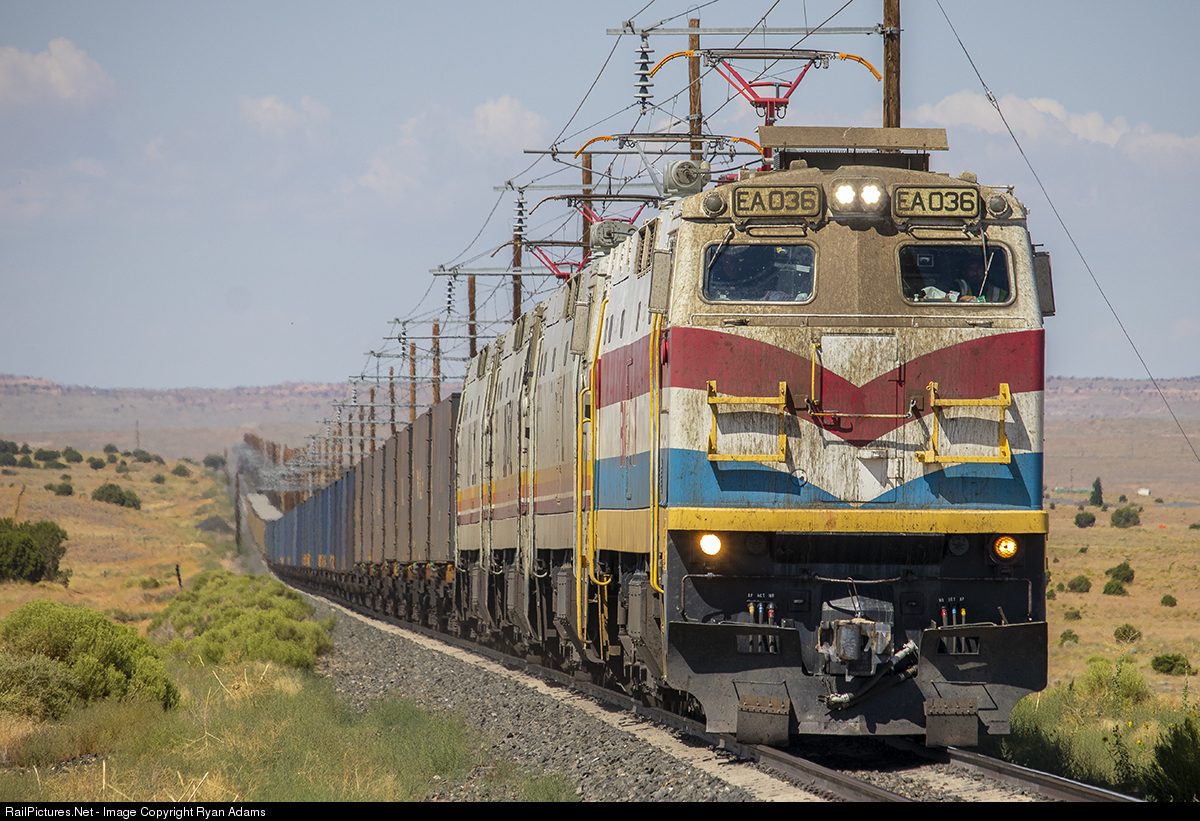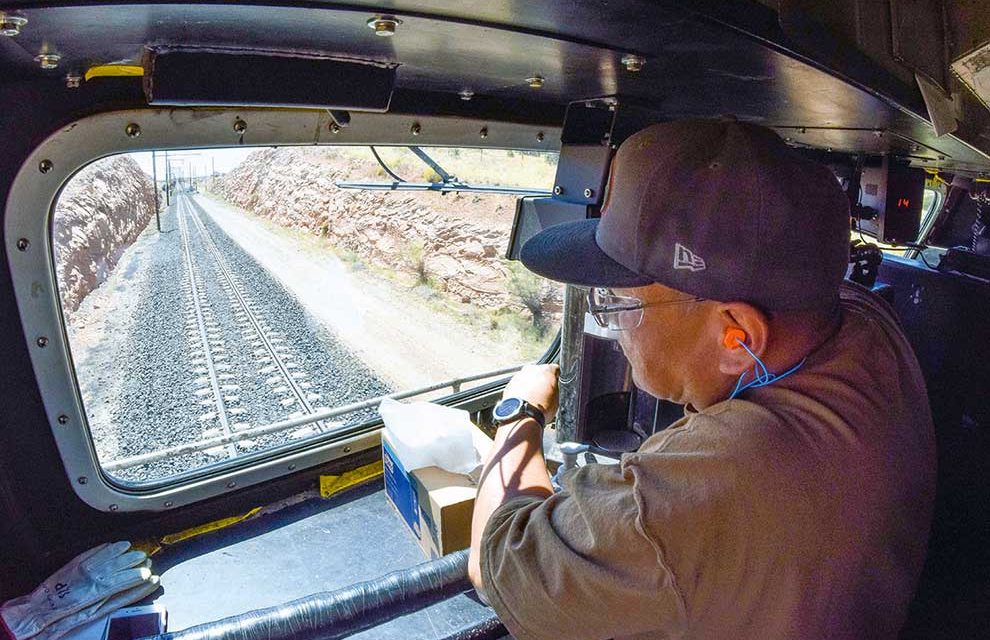This week, the Black Mesa & Lake Powell Railroad made its last journey, shipping coal between a coal fired power plant that is being decommissioned, the
Navajo Generating Station and the Peabody Energy Kayenta Mine.
 |
| RailPictures.net. Image: Ryan Adams, 2019, "With only weeks left in operation, the Black Mesa & Lake Powell railroad contiues its daily journey between Page and the Mine at Kayenta" |
The
Black Mesa & Lake Powell Railroad was one of the more unique railroad operations in the United States. For one thing, its operation did not fall under the authority of the Federal Railroad Administration, as it was completely isolated from the rest of the US Rail Network.
I've mapped the right of way below; despite the remoteness of operations, the desert environment makes the tracks quite easy to spot, making this trace extremely easy.
It ran about 80 miles along electrically powered catenary lines at 50,000 volts. During the height of operations at the power plant, it ran three trains a day,
powered by 15 GE locomotives, one ex-UP, eight ex-Ferrocarriles Nacionales de México, and six of its own purchasing. (American-Rails)
 |
| Image: YouTube video by Mike Armstrong |
The line is entirely within the Navajo Nation in Northern Arizona in an extremely remote part of the United States. Even a trail is highly unlikely to succeed, as much of the area is near private property. That said, it has been known for years that this power plant was eventually going to close, as it is one of the
single-most contributors to the United States' carbon footprint.
 |
| Image: Dick Campbell, c.1985 |
The Navajo valued the track at $120 million in rails and infrastructure as of 2017, and while there are
proposals to try and increase tourism via the line, it will ultimately be up to the tribe whether or not the potential benefits of the line outweigh its value in scrap.
The line was built for one purpose and one purpose only; connecting the power plant with the coal mine to its south. As such, compared to many of the abandonments on this page, it is a fairly new line, having begun operations in 1973.
 |
| A view from the cab with engineer Thomas Long Jr. Image: Krista Allen via Navajo Times |
The coal-fired plant is closing down due to competition from other forms of power, namely
natural gas and solar power. While miners and other workers are protesting the closure, many employees will be given pensions and medical benefits, and those ineligible will be offered transfer to other Peabody operations across the United States.
In the
Navajo Times, engineer Thomas Long noted, "Moving means a new career path, new obstacles, and learning new things and “that’s good,” said Long.
Only time will tell what happens with the right-of-way of the Black Mesa & Lake Powell Railroad.
As always, I hope you enjoyed today's blog, and thanks once again for reading!







I saw the line while on a road trip up route 160 in Arizona in June 2020. The overhead power lines (catenary lines?) are coming apart in many places along the way which was eerie and strange to see. There would be a break in the line and then the wires and supports would be pulled and distorted for several support poles away from the break.
ReplyDeleteGiven that the breaks seemed to occur near road crossings under the wires I wondered if someone deliberately broke the wires in places as the system seems new to be falling apart on its own.
Jeff Kirsten
Wow ! The real Black Mesa Train ! I think it only existed in the Half Life universe...
ReplyDelete